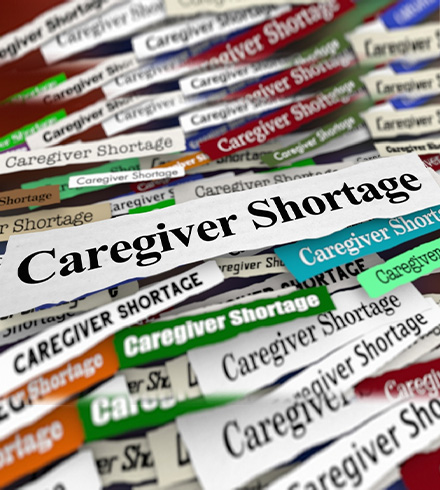It is no surprise that the recruitment challenges in the healthcare industry were hit significantly hard by COVID-19. In 2021, the MGMA stat poll discovered that around 73% of medical recruiters find staffing a significant challenge during the pandemic. Other recruitment challenges in the healthcare industry included uncertainty and cost/revenue at 15% and 10%, respectively.
In 2022, tribepad reports that WHO predicts a shortfall of 14.5 million healthcare workers worldwide by 2030. Furthermore, healthcare talent retention has been pointed to be growing exponentially. Hence, for an industry notorious for its high turnover rates, such reports can add to the organization’s dilemma.
The Upcoming Physician Shortage in the U.S. Healthcare Industry
Furthermore, the latest report from the Association of American Medical Colleges (AAMC) found that the recruitment challenges in the healthcare industry will increase multifold due to the physician shortage. The physician shortage is estimated to go from 37,000 to 124,000 by 2034 and will include all medical specialties, like primary care.
According to AAMC, the recruitment challenges in the healthcare industry persists due to the current USA demographics and the maturing baby boomer percentage population. The talent shortage is not only adding to the country’s healthcare budget but also taking away a good chunk of its workforce.
In 2020, a report by Nursing Solution Inc on healthcare retention and staffing illustrated harrowing hospital turnover rates. The survey was conducted in 3,000 healthcare facilities discovering that an average establishment witnessed a workforce turnover of 89% between 2015 and 2019. On a national level, hospital turnover stood at 17.8%.
However, the question arises why is the workforce quitting?
Reasons for the Great Healthcare Turnover
While COVID-19 has had a rabid impact on employee turnover, an organization’s tussle with talent retention has been brewing for ages. According to a statistical report, voluntary terminations within the healthcare sector stood at 90.9%. The revelation prompted the group to scope out the cause of so many healthcare quits. The study came up with a couple of findings that emerged as the primary reason for the massive employee churn-out:
- The desire for better career growth.
- Need for better financial and non-financial compensation.
- Poor relationships with supervisors and managers.
- Imbalance in the workload and staffing scale.
- Retirement.

A high staff turnover rate indicates that the current personnel is working overtime and compensating for the lack of resources. Consequently, the unprecedented changes to duty schedules are stressing healthcare professionals out. Hence, for the entire industry, the never-ending dysfunctional cyclical effect tarnishes patient care and increases recruitment challenges in the healthcare industry.
Furthermore, depression and fatigue are recurring mental health issues that further trigger the physician turnover rate and the subsequent recruitment challenge in the healthcare industry. In 2018, Medscape surveyed more than 15,000 physicians from 29 healthcare specialties. Around 42% blamed work burnout, while 15% pointed to colloquial or clinical depression.
The Bottom Line
While it is true that COVID-19 has had a detrimental effect on the already crumbling healthcare staffing capacity, there are ways the industry recruiters can redeem themselves. Working on long-term employee retention policies and simplifying the job search process can work wonders for the incoming horde of new healthcare candidates.


